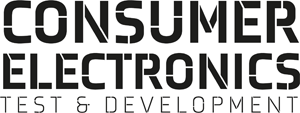The new Eyesafe Display Requirements 3.0 and Eyesafe Accessory Requirements 3.0 programs set criteria for the consumer electronics and screen protection industries, establishing thresholds for high-energy blue light and color performance. Eyesafe and UL Solutions have developed new industry methodologies to help verify marketing claims related to blue light reduction and color performance.
Eyesafe Display Requirements 3.0 defines key criteria, including blue light toxicity, circadian stimulus, color gamut and color temperature, to measure a product's blue light emissions associated with visual comfort and sleep disruption, while ensuring display color performance.
RPF (radiance protection factor) measures protection from blue light that can impact eyes, focusing on the blue light hazard, peaking between 435-440 nanometers (nm). The higher the score (on a scale of 0-100), the better the blue light reduction. A score of 35 or higher is needed to earn a marketing claim verification.
CPF (circadian protection factor) focuses on reducing blue light that can affect sleep and circadian rhythms (480-500 nm). Higher scores indicate less circadian disruption, with 35 or higher needed to earn a marketing claim verification.
Color performance determines accuracy and vividness of display colors.
Eyesafe Accessory Requirements 3.0 defines key criteria tailored to display type (LCD/LED or OLED) to measure a product's blue light emissions associated with visual comfort and/or circadian impact, while ensuring display color performance.
For LCD/LED screens, which are common in laptops and monitors, the assessment methodology focuses on RPF, or level of blue light filtration across the wavelengths that may impact eye health (435-440 nm) and blue light toxicity reduction. The higher the score (on a scale of 0-100), the better the blue light reduction. A score of 20 or higher is needed to earn a marketing claim verification.
For OLED screens, which are common in smartphones, the assessment methodology targets CPF, or level of blue light filtration across the wavelengths that can affect melatonin production and circadian rhythms (peak 480-500 nm) and change in circadian impact (380-780 nm). Higher scores indicate less circadian disruption, with 20 or higher needed to earn a marketing claim verification. In terms of color accuracy, all products must meet criteria for correlated color temperature and luminance to ensure display colors remain vibrant (accommodations provided for privacy screen protection).

